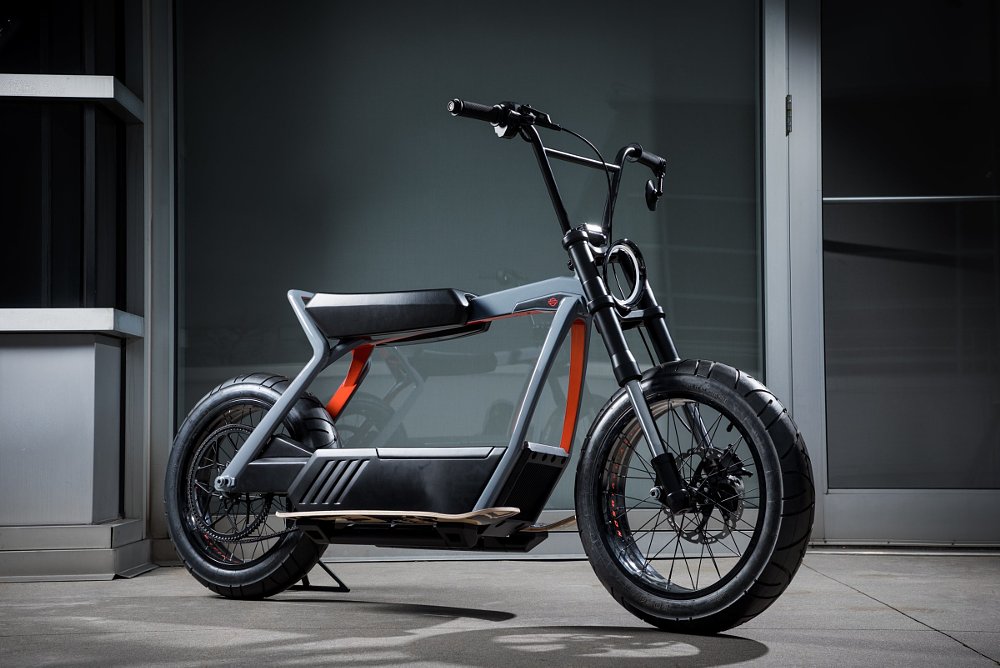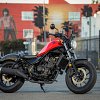You know how when you're bench racing with your riding friends and one of them says "The motorcycle industry should do X" and you immediately take a different opinion and you lose half an hour of riding time in a friendly debate?
We do that, too, here at Common Tread. But in this case it's not a total waste of time, because we got an article out of it and we're inviting you to add your opinions.
The topic came up when Spurgeon and I were talking about Harley-Davidson's plans to partner with a foreign company to build a 250 cc-class model for world markets. It's similar to what BMW is doing with its G 310 line. More new motorcycles and scooters are sold in a week in India or in two weeks in Indonesia than are sold in a year in the United States, but few consumers in those countries can afford — or even want — the big motorcycles Harley-Davidson makes.
Spurgeon and I agree that Harley's move into those markets, where it can be an aspirational brand, is a good move. But should Harley-Davidson also bring that "world bike" to the U.S. market? That's where the debate begins.

Spurgeon: Harley should bring a 250 cc cruiser to the U.S. market
To be clear, I completely understand and condone Harley’s play to overseas markets. I have no doubt as to the incredibly untapped growth potential of emerging markets, especially in India. I am excited to see how this plan works out for The Motor Company. My only argument is that I think they’re leaving dollars on the table by not bringing these small-displacement bikes to the U.S. market.
Taking a quick look at the numbers, the overall cruiser segment was down 12.8 percent at the close of 2018. However, within that segment, sales of cruisers under 600 cc is up 32.3 percent. This was the only sub-group of cruisers to show growth. The 601-900 cc cruiser segment was down 24.4 percent year over year and sales of cruisers over 900 cc were down 14 percent.
Furthermore, there is no competition in this sub-600 cc segment other than Honda with the Rebel 300 and Rebel 500 and Yamaha’s V-Star 250. Harley has one bike in this segment, the Street 500, and it’s arguably priced too high. The Street 500, in black with ABS, will set a new rider back $7,649, or $1,150 more than a Honda Rebel 500 with ABS ($6,499).
I think Harley-Davidson should release a 300 cc cruiser, with ABS, for under $5,000 for the domestic market. At that displacement level, they could expand sales in emerging markets while simultaneously competing in a growing segment in America.
Keep in mind that a 300 cc motorcycle is a decently large motorcycle in a country like India. It’s more of an aspirational bike for middle-class Indians, much like the KTM 390 Duke. In America, however, the focus will be more on new riders and attracting a younger riding base to the brand. This is something Harley desperately needs to do as the aging Baby Boomers move out of motorcycling.
There has been a lot of talk from Harley Davidson about diversifying their lineup away from just cruisers and touring bikes, and I’m excited to see what they actually come up with. But the way I see it, that doesn’t solve their problem. In order to attract a younger audience, they need to build motorcycles the average 20-year-old can actually afford. For example, the electric LiveWire looks like a cool bike, but how many riders under the age of 30 will be able to justify its $30,000 price tag?
And truth be told, I think Harley gets it. They recently purchased StaCyc, one of the coolest companies in motorcycling today. StaCyc manufactures electrically powered balance bikes that range in speed from five to 11 mph. These bikes are squarely aimed at getting kids as young as three years old onto powered two-wheelers. Harley Davidson understands that they need to get kids hooked young if they have any hope of getting them onto a Harley when they graduate to a genuine motorcycle.
The way I see it, a 300 cc motorcycle is the bike that Harley needs to produce for America as well as to emerging markets. They might not make a fortune on profit margins, but, if executed correctly, they’ll succeed in attracting a new, younger audience into the fold. And in turn, the second bike those folks buy might also be a Harley Davidson.

Lance: Three problems with a small Harley-Davidson cruiser
I see three problems with Spurgeon's plan for Harley-Davidson: a misinterpretation, a miscalculation and a pitfall.
First, the misinterpretation: I believe Spurgeon is taking the wrong message from the statistics on sales of small cruisers. The segment is growing in percentage terms, in my view, only because Honda revived the class from extinction with its Rebel 300 and 500 (which Lemmy and Spurgeon liked). Small cruiser sales are up because there's finally a new small cruiser for sale. The overall decline in the cruiser segment is the bigger trend. Young people's fancy may flit from café racers to scramblers to the next hot Instagram trend, but they will not mimic the Baby Boomers and flock to cruisers. History rhymes, not repeats.
There's also an assumption buried in there that Harley's world bike will be a cruiser, or at least cruiserish in its styling cues. Given our experience with Harley and the Street 500, that's a reasonable assumption, but not a sure thing.
Second, the miscalculation: would the target audience even consider a small Harley cruiser? I'm going to make an assertion that's impossible to prove, or even substantiate, without a huge amount of market research. But I think we may have reached the tipping point where, among young people in the United States, the Harley-Davidson brand is a neutral factor, at best.
Impossible, you say? With Harley's legendary brand recognition and loyalty?
Here's my point. I, too, remember the boom days when the only reason to walk into a Harley-Davidson dealer was to try to get a smug salesman to put your name on a waiting list to buy a new motorcycle, but those days are gone, preceding the decline of my generation, which fueled it. Despite Harley-Davidson's efforts to expand beyond its "core customers," (read: middle-aged white males), the brand is still associated with white guys my age. (Begin the countdown until someone posts that "South Park" episode in the comments, as happens every time we write about Harley-Davidson and demographics.) Meanwhile, we have reached the point in the United States where the under-18 population is not even majority white. Will tomorrow's young, ethnically diverse, tech-savvy consumers really embrace a brand associated with white guys over 55? Or will they buy a Honda 300 instead? More likely, they won't buy a small cruiser at all.
Third, the pitfall: imported Harleys. Yes, Harley-Davidson has brought small motorcycles into the country before, but not under the current ownership. Harley has gotten away with having foreign parts in their "American-made" motorcycles. They've gotten away with laying off American workers and shifting production overseas to serve international markets. The traditional Harley customers will likely also let them get away with un-Harley-like models like the forthcoming liquid-cooled Pan America and Streetfighter, as long as the "real Harleys" are still available. The one thing the company has always been able to say, however, is that every Harley sold in the United States was assembled in the United States, and importing bikes built abroad with a foreign partner company would cross a line that might actually be a step too far for Harley's traditional customers. Maybe it wouldn't be a problem, but the risk-reward ratio has to be considered.
So what should Harley-Davidson do? I think the most exciting concept Harley-Davidson has shown was its electric scooter. I believe that for the U.S. market Harley-Davidson has to continue making its traditional products while also producing new ones that are not incremental shifts — like a small cruiser — but are radical departures. Maybe even sold under another brand.
If only Harley-Davidson had another brand with a sporty, upstart reputation. Oh, wait, it killed Buell.
Buell as it existed wasn't what Harley-Davidson needs now, but it could have been developed into that. If Buell hadn't been forced to build the Blast around half a Sportster engine, it could have been the cool, affordable bike Harley-Davidson is going to need to attract the pool of diverse, young, U.S. consumers, both men and women, who don't identify with the Harley-Davidson of yore.











